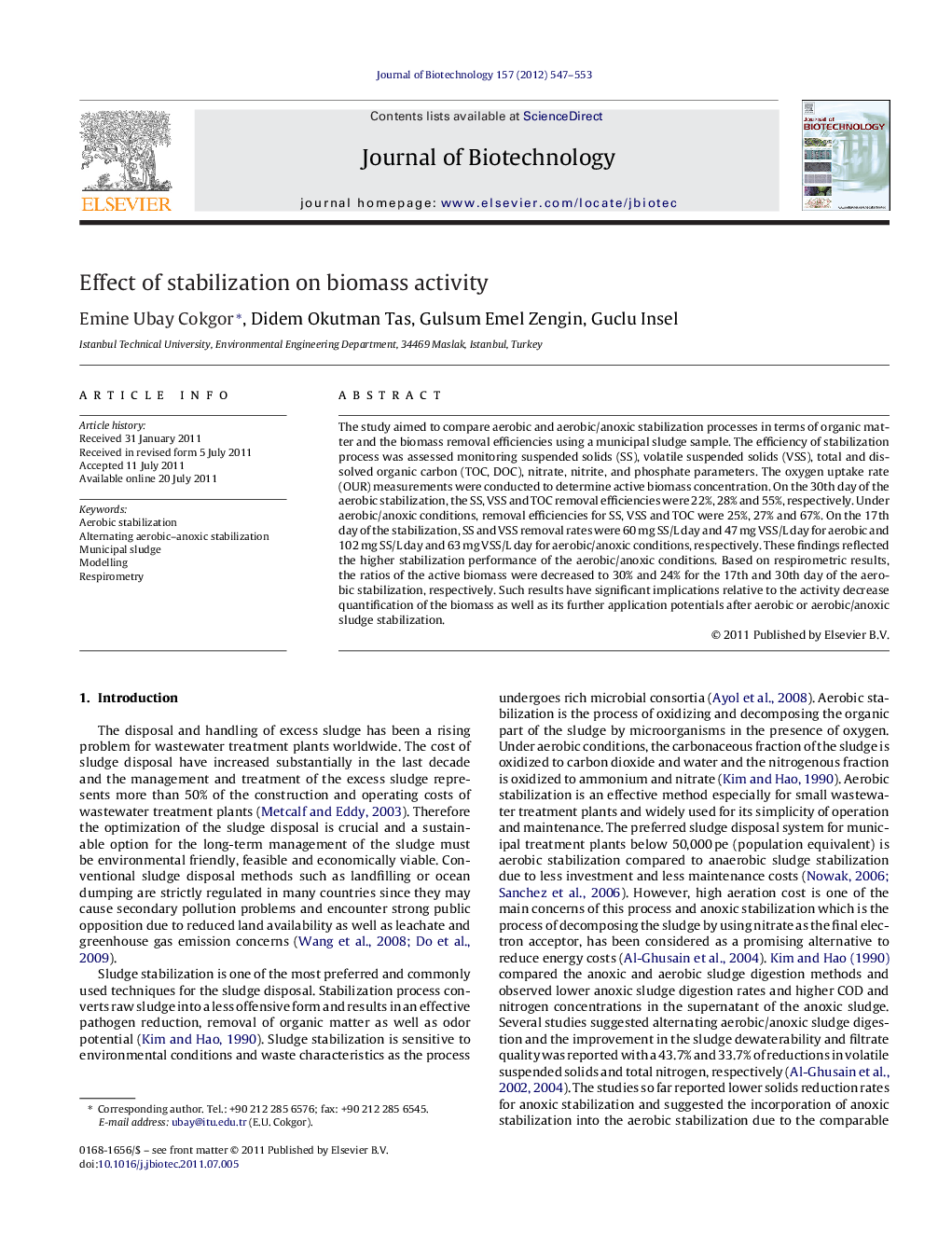| Article ID | Journal | Published Year | Pages | File Type |
|---|---|---|---|---|
| 23913 | Journal of Biotechnology | 2012 | 7 Pages |
The study aimed to compare aerobic and aerobic/anoxic stabilization processes in terms of organic matter and the biomass removal efficiencies using a municipal sludge sample. The efficiency of stabilization process was assessed monitoring suspended solids (SS), volatile suspended solids (VSS), total and dissolved organic carbon (TOC, DOC), nitrate, nitrite, and phosphate parameters. The oxygen uptake rate (OUR) measurements were conducted to determine active biomass concentration. On the 30th day of the aerobic stabilization, the SS, VSS and TOC removal efficiencies were 22%, 28% and 55%, respectively. Under aerobic/anoxic conditions, removal efficiencies for SS, VSS and TOC were 25%, 27% and 67%. On the 17th day of the stabilization, SS and VSS removal rates were 60 mg SS/L day and 47 mg VSS/L day for aerobic and 102 mg SS/L day and 63 mg VSS/L day for aerobic/anoxic conditions, respectively. These findings reflected the higher stabilization performance of the aerobic/anoxic conditions. Based on respirometric results, the ratios of the active biomass were decreased to 30% and 24% for the 17th and 30th day of the aerobic stabilization, respectively. Such results have significant implications relative to the activity decrease quantification of the biomass as well as its further application potentials after aerobic or aerobic/anoxic sludge stabilization.
► Higher stabilization was obtained under aerobic/anoxic conditions in terms of TOC removal. ► Biomass growth kinetics exhibit differences during the course of stabilization. ► Higher secondary phosphate release phenomena was encountered in the sludge subjected to aerobic/anoxic condition.
